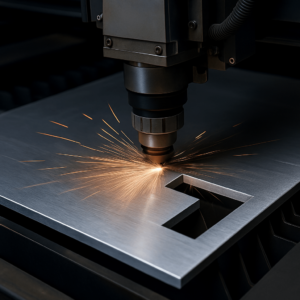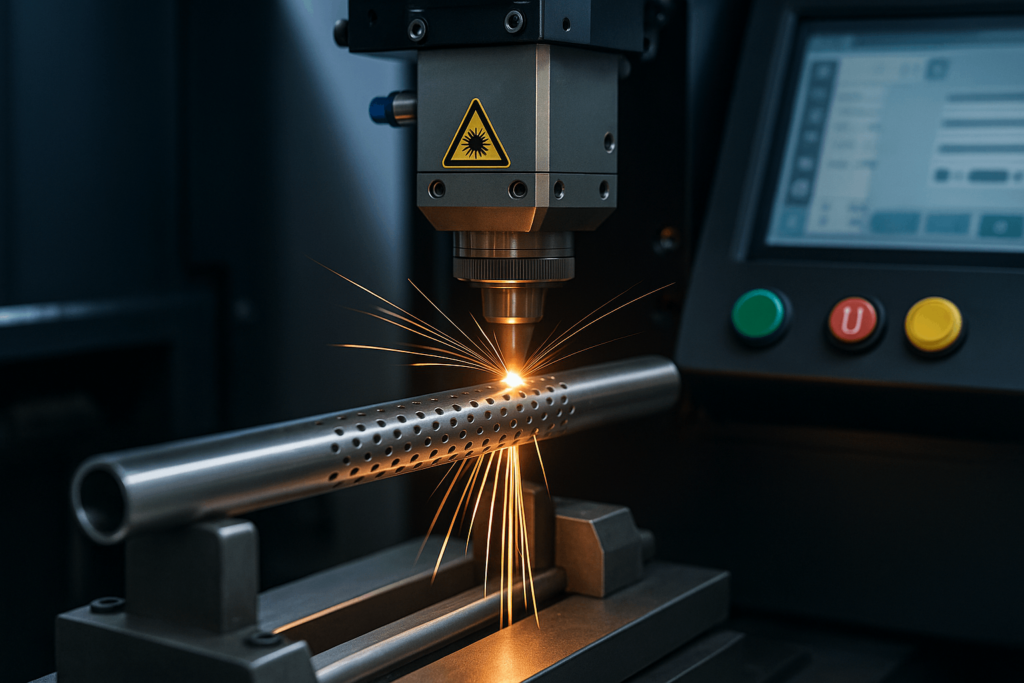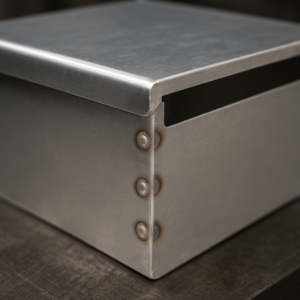Introduction: The Real Value of Expert Aluminum Fabrication
In today’s global market, OEM manufacturers and bulk buyers are under increasing pressure to deliver lighter, stronger, and more sustainable components—without compromising production timelines or costs. Aluminum sheet metal fabrication has emerged as a strategic solution across industries ranging from electronics and EVs to enclosures and vending machines.
This guide provides practical, technical, and sourcing-focused insights into custom aluminum sheet metal fabrication for OEM and wholesale buyers. If you’re selecting alloys, planning production, or optimizing supply chains, this is your go-to reference for smarter, faster, and more cost-effective results.
Part 1: The Strategic Choice – Why Aluminum is Your Winning Material
Section 1: The Competitive Edge – Unpacking Aluminum’s Core Advantages
Aluminum’s widespread use across high-performance industries stems from its unique combination of properties. Leveraged correctly, these traits drive performance and reduce lifetime costs.
Its outstanding strength-to-weight ratio—roughly one-third the density of steel—provides structural integrity without the weight, critical in aerospace and automotive where weight savings mean efficiency.
Additionally, its natural corrosion resistance protects against environmental degradation. The thin oxide layer that forms upon exposure to air regenerates if scratched, making aluminum ideal for marine or humid environments.
Aluminum’s thermal and electrical conductivity, along with excellent malleability, make it indispensable in electronics housings, heat sinks, signage panels, and industrial brackets. Its ductility also allows for complex, single-piece parts that simplify assembly and reduce joining costs.
From a sustainability standpoint, aluminum is 100% recyclable without degradation. Reprocessing requires just 5% of the energy needed for primary aluminum, aligning with both economic and ESG goals.
Section 2: Alloy Matters – Choosing the Right Grade for Your Project
Pure aluminum is soft and ductile. Alloying unlocks its engineering potential by improving strength, corrosion resistance, and weldability.
Here’s a breakdown of the most used alloys in custom aluminum sheet metal fabrication services:
- 3003 Alloy – The Workhorse: Offers excellent formability and weldability thanks to manganese. Best for food processing equipment, chemical containers, and roofing systems.
- 5052 Alloy – The Marine Guardian: Known for high corrosion resistance, especially against saltwater. Suitable for marine-grade components and electrical enclosures.
- 6061 Alloy – The Structural Powerhouse: Balanced strength, weldability, and machinability. Great for structural frames and custom CNC aluminum parts.
- 7075 Alloy – The Aerospace Champion: Extremely strong due to zinc; similar to steel in tensile strength. Ideal for aerospace fittings and precision mechanical parts.
| Feature | 3003 Aluminum | 5052 Aluminum | 6061 Aluminum |
|---|---|---|---|
| Primary Strength | Excellent Formability & Workability | Excellent Corrosion Resistance | High Strength & Versatility |
| Strength | Medium | Medium to High | Medium to High (Heat-Treatable) |
| Weldability | Excellent | Good | Good |
| Corrosion Resistance | Good | Excellent (Marine Grade) | Excellent |
| Typical Applications | Food/Chemical Equipment, Roofing | Marine Components, Enclosures | Structural Frames, Aircraft Parts |
Part 2: The Production Playbook – From Flat Sheet to Final Form
Once you’ve selected the optimal alloy, manufacturing begins. Every fabrication step—from cutting to finishing—directly influences quality, tolerance, and turnaround time.
Section 3: Precision Starts Here – Choosing Your Cutting Method
The blanking process—cutting sheets into initial shapes—includes:
- Laser Cutting: High precision (±0.005”), fast, excellent for intricate geometries. Perfect for custom aluminum signage and ventilation panels.
- Waterjet Cutting: Uses no heat, thus avoids Heat-Affected Zones (HAZ). Ideal for heat-treated or delicate aluminum parts.
- Plasma Cutting: Best for thick sheets and plate metal. Introduces HAZ, less ideal for high-precision parts.
- CNC Turret Punching: Fast and efficient for repetitive hole patterns, louvers, and custom brackets.
- Mechanical Shearing: Efficient for straight-line cuts and square shapes, especially in high-volume bulk aluminum fabrication.
Each method offers trade-offs between accuracy, speed, cost, and material integrity.

Section 4: Shaping the Metal – Forming & Bending Considerations
Forming transforms flat aluminum into functional 3D components. CNC press brakes ensure consistency and repeatability, which is key in large-scale OEM production.
- Springback, a result of aluminum’s elasticity, must be factored in. Overbending techniques help achieve intended angles.
Other forming techniques include:
- Deep Drawing: For rounded containers, canisters, and appliance housings.
- Stamping: Suitable for high-speed production of electrical casings and nameplates.
- Roll Forming: Best for long components like aluminum channels, window trims, and enclosures.

Section 5: Joining Techniques – Getting It Right from the Start
Joining aluminum requires strategic planning due to its oxide layer and thermal properties.
Options include:
- TIG Welding: Delivers precision and aesthetic finish. Common for thinner panels and decorative aluminum components.
- MIG Welding: Better for thicker materials and structural applications.
- Self-Piercing Rivets (SPR): Widely used in automotive and appliance industries; no pre-drilling needed.
- Adhesive Bonding: Excellent for dissimilar materials. Used in lightweight aluminum panel fabrication for EV components or displays.
| Joining Method | Heat Input | Key Advantage | Best For… |
|---|---|---|---|
| TIG/MIG Welding | High | High Strength | Structural joints where HAZ is acceptable |
| Riveting / SPR | None | Preserves Material Properties | High-vibration environments, automated assembly |
| Adhesive Bonding | None | Uniform Stress, Dissimilar Materials | Seamless aesthetics, lightweight panels |
Part 3: Enhancing Durability – Finishing, Design & Inspection
Section 6: Finishing Matters – Surface Treatments for Performance
Protective finishes enhance corrosion resistance, appearance, and lifespan.
- Anodizing: Creates a tough, controlled oxide layer. Excellent for architectural panels and lighting components.
- Powder Coating: Offers superior impact and UV resistance, commonly used for exterior enclosures.
- PVDF Painting: Ideal for chemical-resistant and long-term outdoor applications.
Section 7: Design Optimization – Practical DFM Rules
Design for Manufacturability (DFM) ensures cost-effective, scalable production:
- Use correct bend radius to avoid cracks, especially in hard tempers like 6061-T6.
- Maintain adequate hole-to-edge distance to prevent tearing.
- Add bend reliefs near corners to reduce distortion.
- Use nesting strategies to reduce waste and increase material yield—important for large-volume custom aluminum orders.
Section 8: Tolerances & Quality Control – When Precision Counts
Using tools like CMMs (Coordinate Measuring Machines) allows precise validation. Many OEM customers require ±0.004” or better.
Working with a certified partner (e.g., RoHS, ISO 9001) ensures consistency and compliance with export standards.
For aerospace or defense contracts, AS9100 certification ensures rigorous traceability, risk control, and documentation.
Part 4: Success in the Real World – Applications & Trends
Section 9: Case Studies – What Top Brands Are Doing
- Ford F-150 Pickup: Switched to aluminum body, saving ~700 lbs per vehicle. Combined SPR + bonding technologies for strength and speed.
- Burj Khalifa Skyscraper: Used anodized extruded aluminum curtain walls to resist desert weather while maintaining structural performance.
Section 10: Common Challenges in Aluminum Fabrication (And How to Solve Them)
- Surface Scratches: Use protective films and non-metallic handling tools.
- Welding Burn-Through: Preheat and adjust travel speed.
- Thermal Conductivity Issues: Clamp tightly, use backing bars.
- Springback: Adjust tooling to overbend based on alloy.
Section 11: What’s Next in Aluminum Fabrication?
- Aluminum-Lithium Alloys: Lighter and stronger, gaining traction in aerospace.
- WAAM (Wire Arc Additive Manufacturing): Enables large-scale 3D printing of aluminum structural parts.
- AI & Smart Factories: Machine-learning driven inspection and scheduling optimize aluminum CNC machining throughput.
Conclusion: Your Trusted OEM Aluminum Fabrication Partner
Aluminum sheet metal fabrication is not just a process—it’s a strategic capability. When every cut, bend, and weld is executed with precision, the result is not just a product—it’s a competitive edge.
YISHANG has over 26 years of experience in custom aluminum fabrication, serving OEM clients across automotive, industrial, medical, and electronics sectors. As a RoHS- and ISO 9001-certified Chinese factory, we support batch production, ODM/OEM development, CNC aluminum parts, and fast global shipping.
Request a custom quote today and get expert support from design to delivery.


